Why Are My Apples Pink Inside? Unraveling the Mystery of Rosy Fruit
Have you ever sliced open a fresh, crisp apple, only to be greeted by a surprising sight: a vibrant pink blush or rosy hue lurking beneath the skin? Being so hungry, you want to take a bite but have to stop and think, Why Are My Apple Pink inside, and are they safe to eat?
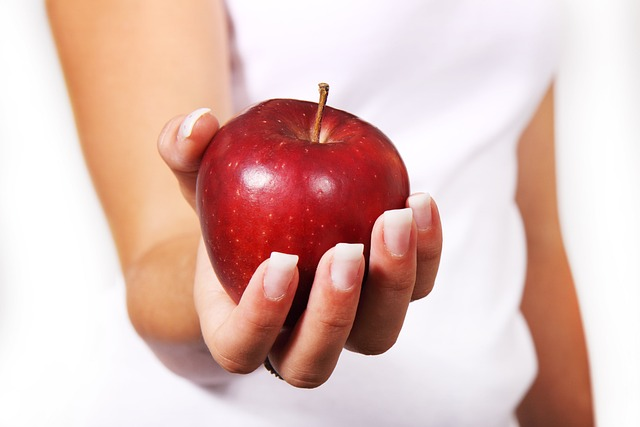
Discover The Reasons for Red Fleshed Apples or Light Pink Flesh and How to Prevent Them
Apples are among the most beloved fruits worldwide, gracing our orchards, kitchens, and lunchboxes with crunchy sweetness golden delicious everything.
They come in various colors, from the classic apple red to golden yellow and even shades of green. But when you cut into an apple to make your Traditional Apple Butter Recipe and find a blush of pink, it can raise questions about its quality and safety for consumption.
In exploring the “pink apple mystery,” we’ll demystify the causes behind this phenomenon, provide insights into the factors at play, and offer tips on preventing your apples from turning pink inside.
So, let’s get started and unravel the secrets of why your apples may sport a rosy hue beneath their naturally red flesh and skin.

Why Are My Apples Pink Inside?
It’s a perplexing phenomenon that leaves many apple enthusiasts scratching their heads and asking, “Why are my apples pink inside?” Let’s dive deep into the fascinating world of apples to uncover the top three reasons behind this intriguing coloration.
Top 3 Reasons Why Your Apples are Pink on the Inside
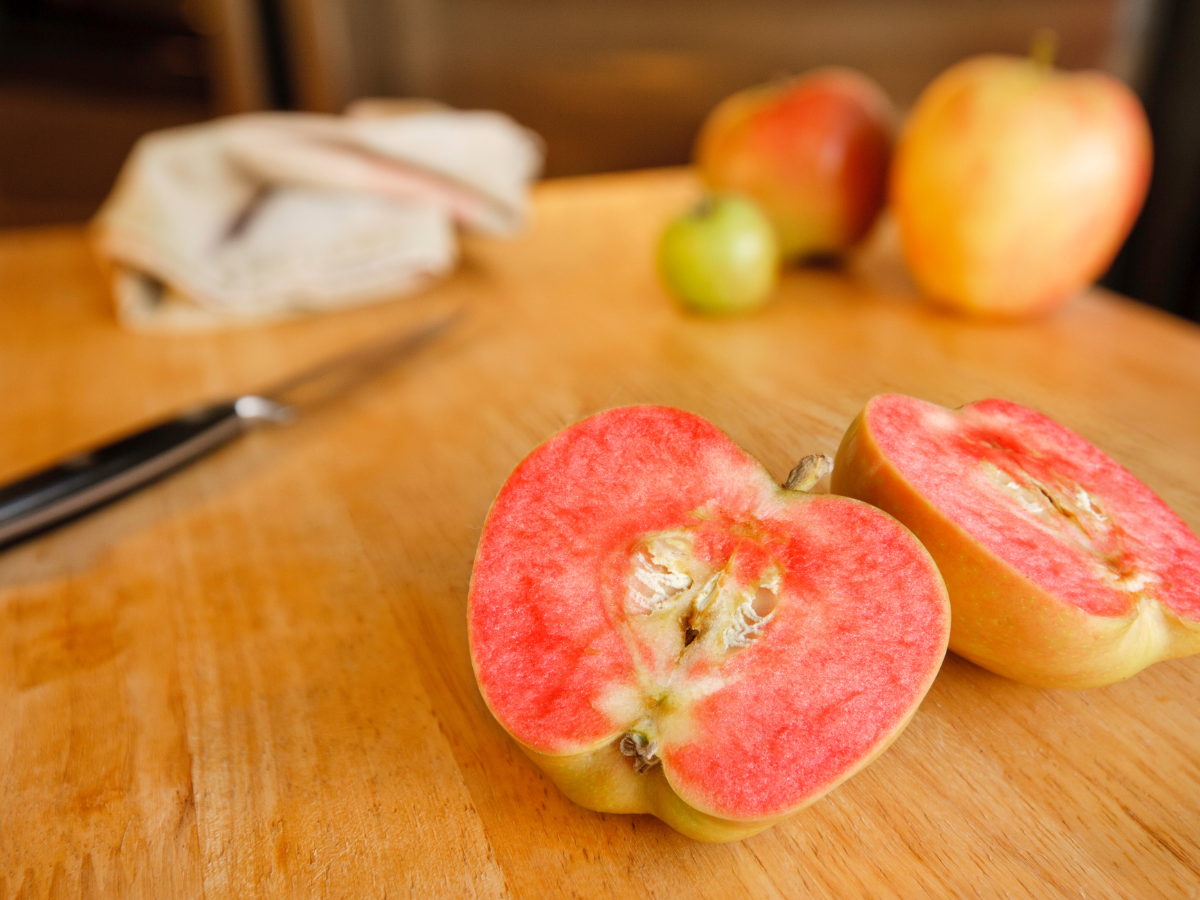
1. The Influence of Varietal Characteristics
One of the most significant factors contributing to the pink coloration of apples lies in the inherent characteristics of the apple variety itself. Different apple varieties have diverse genetic compositions that dictate their flavor, texture, external appearance, and internal color.
As we dig deeper into the question of “Why are my apples pink inside,” let’s explore how varietal traits play a pivotal role.
Variety Matters:
Apple orchards are home to a vast array of apple cultivars, each with unique attributes. Some apple varieties, such as the Pink Pearl and Hidden Rose apple, are known for their pinkish to deep-red flesh.
These apples, often called “pink-fleshed” or “red-fleshed” varieties, exhibit this unique trait due to specific pigments in their flesh.
The key pigment responsible for these apples’ pink or red color is anthocyanin. Anthocyanin is a natural plant pigment in various fruits and vegetables, imparting red, purple, or blue hues to their tissues.
In pink or red flesh apples, anthocyanin accumulates in their flesh during development, giving them their characteristic rosy color.
Anthocyanin Concentration:
The intensity of these apples’ pink or red hue can vary depending on anthocyanin concentration. Some pink-fleshed apple varieties have more pronounced coloration, while others may exhibit a milder pinkish tint. The genetic makeup of the apple cultivar dictates the levels of anthocyanin production, which, in turn, influences the depth of pink sparkle and color of eat apples.
Harvest Time and Ripeness:
The timing of apple harvest also plays a role in the expression of pink or red coloration. Apples that are harvested earlier in their ripening process may have a paler pink hue, while those allowed to fully ripen on the tree tend to develop a deeper, more vibrant color. Therefore, if you’re seeking apples with a particular shade of red or pink on inside, consider the timing of your harvest.
In summary, the first key reason behind the pink coloration of apples lies in the genetic characteristics of the apple variety itself. Some apple cultivars are naturally pink-fleshed due to the presence of anthocyanin, a pigment responsible for their unique color. The concentration of anthocyanin and the timing of harvest can further influence the intensity of the pink hue.
2. The Impact of Environmental Factors
While varietal characteristics provide a primary explanation for pink-fleshed apples, environmental factors can also contribute to this phenomenon. Apples are sensitive to their growing conditions, and subtle changes in these conditions can affect their internal coloration. Let’s explore the second reason for “why are my apples pink inside” by delving into the influence of environmental factors.
Sunlight Exposure:
One of the most significant environmental factors affecting the internal color of apples is sunlight exposure. Apples that receive ample sunlight during their growth tend to develop more intense pigmentation. This phenomenon is similar to how sunlight influences the color of human skin, causing it to tan or develop a deeper hue.
In orchards, apples on the outer canopy or sun-facing side of the tree are more likely to have pink or red interiors. The exposure to direct sunlight stimulates the production of anthocyanin in the apple’s flesh, leading to the development of the characteristic pink color. So, if you’re keen on having pink-fleshed apples, consider the positioning of your apple tree and ensure it receives adequate sunlight.
Temperature Fluctuations:
Temperature fluctuations, particularly during the apple’s growth and ripening stages, can also impact the development of pink winter red flesh above. Cooler temperatures, especially during the night, can enhance anthocyanin production, resulting in a deeper pink or red coloration.
Conversely, warmer temperatures may inhibit the formation of anthocyanin, leading to paler apples with deep red streaks of flesh within. Therefore, the climatic conditions during the growing season can influence the internal color of apples. Be mindful of the temperature in your region and its potential impact on your apple crop.
Soil Composition:
The composition of the soil in which apple trees are grown can indirectly affect the fruit’s internal color. Soils rich in certain minerals and nutrients can influence the availability of essential elements for apple development. While this isn’t the primary factor, it’s worth considering if you’re experiencing inconsistent coloration in your apple crop.
In summary, environmental factors, including sunlight exposure, temperature fluctuations, and soil composition, can contribute to the pink dark red coloration of apples. Apples receiving more sunlight and experiencing cooler temperatures are more likely to develop a deeper pink or red hue inside.
3. The Role of Storage and Handling
The third reason behind “why are my apples pink inside” is often related to post-harvest storage and handling practices. Even if you’ve grown apples with the perfect genetic traits and optimal environmental conditions, improper storage and handling can lead to unwanted color changes in your fruit.
Chilling Injury:
Apples are sensitive to temperature extremes, and exposure to cold temperatures can result in chilling injury. This is a condition where the fruit’s cells are damaged due to exposure to temperatures below their tolerance threshold. Chilling injury crab apples can manifest as various symptoms, one of which is the development of pink or reddish flesh.
When apples are subjected to prolonged cold storage or drastic temperature fluctuations, the breakdown of cell membranes can release anthocyanin from cell vacuoles, causing the flesh to turn pink. To prevent chilling injury, store your apples at the recommended temperature for the specific apple variety.
Bruising and Mechanical Damage:
Apples are susceptible to bruising and mechanical damage during harvesting and handling. When the fruit is bruised or injured, it can trigger the production of anthocyanin as part of a stress response. This can result in localized pink or red patches inside the apple.
To minimize bruising and mechanical damage, handle your apples with care during harvesting and transport. Use proper equipment and techniques to ensure the fruit remains intact and free from injury.
Ripening Gases:
Apples continue to respire after they are picked, releasing small amounts of ethylene gas. If apples are stored alongside other ethylene-producing fruits, such as bananas or avocados, they may undergo changes in color and texture. This can sometimes lead to pink or red discoloration.
To prevent the influence of ripening gases, store your apples separately from ethylene-producing fruits in well-ventilated conditions.
In conclusion, post-harvest storage and handling practices can significantly impact the internal coloration of apples. Chilling injury, bruising, mechanical damage, and exposure to ripening gases are all factors to consider if you want to maintain the desired color of your apples.
Preventing Pink Apples: Tips and Suggestions
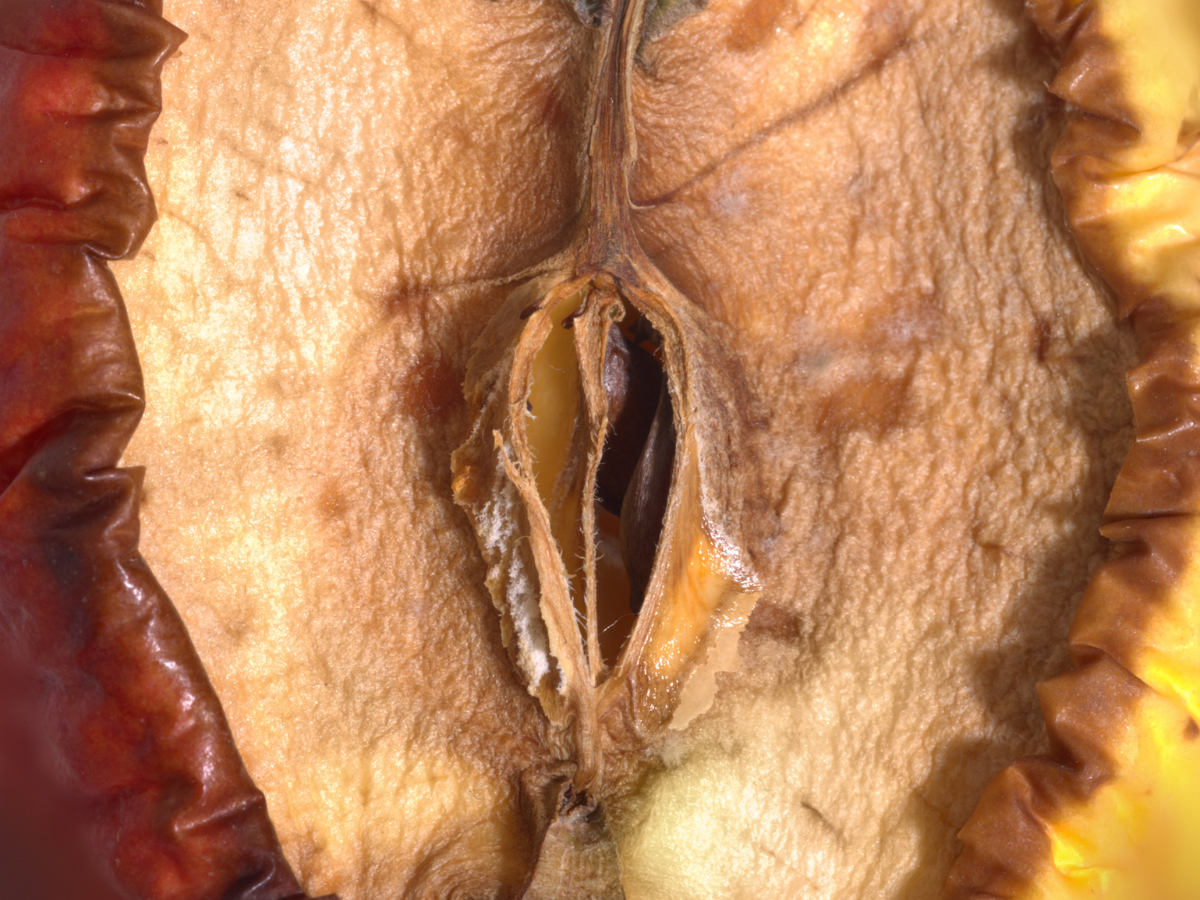
Now that we’ve explored the top three reasons for “why apples are red and my apples pink inside,” let’s wrap up with some tips and suggestions to help you prevent or control pink coloration in your apple crop:
Choose Appropriate Varieties: If you prefer apples with a specific internal color, select apple varieties known for producing the desired hue.
Optimize Sunlight: Position your apple trees in a location where they receive adequate sunlight, which can enhance color development.
Monitor Temperature: Be aware of temperature fluctuations and their potential impact on internal color. Properly store apples at recommended temperatures to avoid chilling injury.
Handle with Care: Minimize bruising and mechanical damage during harvesting and handling to prevent stress-related color changes.
Separate Ethylene-Producing Fruits: Store apples away from fruits that emit ethylene gas to avoid unwanted color and texture changes.
Consider Early Harvest: If you prefer paler pink flesh, consider harvesting your apples slightly earlier in their ripening process.
Enjoy the Variety: Embrace the natural diversity of apple colors and flavors. Pink or red-fleshed apples can add a unique twist to your culinary creations.
How to Slow Down Oxidation Process
The reason apples turn red from inside can be because of an oxidation reaction that occurs when apples react to oxygen from the atmosphere changing their colors. It happens most of the time if one cuts an apple then leaves the apple for awhile.
Once an apple is exposed to the air, the flesh begins oxidizing and changing the colour from yellow-white to pink, and finally reddish-brown. It happens with any kind of apple but it doesn’t just go with white apples or red-flowered apples. Depending on the age of apples or environmental factors, the processing may take longer or slower.
Even when eaten perfectly, oxidized Apples are unappealing. Fortunately, there is an easy solution to slow down browning and retain sweet taste and crunchy texture.
Slowing down oxidation in apples is essential if you want to prevent them from turning brown when cut or sliced. Oxidation occurs when the apple’s flesh is exposed to oxygen in the air, causing enzymatic browning. Here are several methods to slow down oxidation in apples:
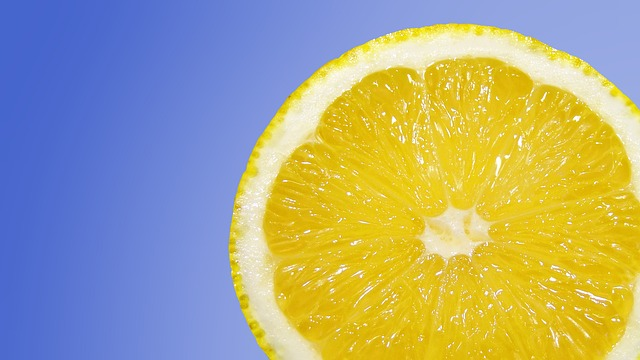
1. Lemon/ Citrus Juice:
– Lemon juice contains ascorbic acid (vitamin C), which is a natural antioxidant that helps prevent browning. To use lemon juice, simply squeeze some fresh lemon juice over the sliced or cut apples. You can also create a mixture of water and lemon juice and soak the apples in it briefly.
Squeezed in lemon juice and citric acid stops enzymes and prevents browning, thereby raising the pH levels of apple. This will alter the apple flavour but it gives it a tart taste. For an even better option you might choose pineapple.
2. Citric Acid Solution:
-You can use a citric acid solution if you don’t have fresh lemonsn. Dissolve a small amount of citric acid (available in powdered form at most grocery stores) in water and soak the apples in the solution for a short time to prevent browning.
3. Vinegar Solution:
– A mixture of water and white vinegar can also slow down oxidation. Combine one part white vinegar with three parts water and soak the apples for a few minutes. Be sure to rinse the apples with clean water afterward to remove any vinegar taste.
4. Salt Water Solution:
– Another option is to use a saltwater solution. Dissolve a teaspoon of salt in a cup of water and soak the apples briefly. Like with the vinegar solution, make sure to rinse the apples with clean water after soaking.
5. Keep the Apples Cold:
– Lower temperatures slow down the enzymatic reactions responsible for browning. Store your apples in the refrigerator to help delay oxidation.
6. Use a Plastic Wrap:
– When you cut or slice apples, cover them tightly with plastic wrap, ensuring that there is minimal air contact. Press the plastic wrap directly onto the exposed flesh to create an airtight seal.
7. Antioxidant-Containing Fruits:
– Adding other antioxidant-rich fruits to your apple dish can help slow down oxidation. Fruits like berries, which are high in vitamin C, can be mixed with apples to reduce browning.
8. Commercial Anti-Browning Products:
– There are also commercial products available specifically designed to prevent browning in cut fruits. These products often contain a blend of antioxidants and enzymes inhibitors to maintain the fresh appearance of the apples.
9. Submerge in Water:
– If you’re not planning to use the apples immediately, you can submerge them in a bowl of cold water to limit their exposure to oxygen. Drain and pat them dry before using.
10. Brush with Honey or Syrup:
– Lightly brushing apple slices with honey, maple syrup, or agave syrup can create a protective barrier against oxygen. This method can also add a sweet flavor to your apples.
Remember that while these methods can slow oxidation, they may not entirely prevent it. Apples will eventually brown if exposed to air for an extended period. However, using these techniques, you can extend your apple slices’ freshness and visual appeal, making them more enjoyable for more extended periods.

Is It Safe to Eat Oxidized Apples?
In addition, apple contains an enzyme called polyphenol oxide, which acts on oxidizing molecules in the polyphenol molecules, giving apples pigmentation. The enzymes are usually kept in separate parts of the fruit cell membrane.
Often when the skin is cut and slit, cells get damaged, resulting in contact between both people. When oxygen is added to this mixture, you will undergo a chemical reaction known as oxidation, which alters the polyphenol to produce the brown colour. It started as light pink, then gradually morphed into dark red skin, brown, and finally dark brown.
What kind of Apples is Pink inside?
What is a Pink Pearl Apple, and How can I tell the Difference?
A Pink Pearl or Pink Sparkle apple is a distinctive variety known for its striking pink to reddish-pink flesh. This apple variety is celebrated for its unique and vibrant interior color, setting it apart from other apples with the more common white flesh or cream-colored apple flesh.
Here are some key characteristics and information about Pink Pearl apples:
1. Appearance: Pink Pearl apples typically have green or yellow-green skin that may be slightly blushed with pink or red. However, the most remarkable feature of this apple is its pink or reddish-pink flesh. When you cut a Pink Pearl apple open or cut apple slices, you’ll be greeted by a deep crimson vivid display of pink streaks inside with red or pink hues that vary in intensity.
2. Flavor: Pink Pearl apples bright pink flesh offer a sweet-tart flavor profile that is refreshing and enjoyable. Depending on their ripeness, the apple pink pearl taste can range from mildly tart to moderately sweet. Their unique appearance and delightful taste make them a favorite among apple enthusiasts.
3. Season: Pink Pearl apples is an Apple Variant usually in season during the late summer and early fall months, making them a sought-after variety for those looking to add a touch of pink skin color to their fruit salads, desserts, or snacks.
4. Culinary Uses: Due to their bright red striking appearance, Pink Pearl apples are often used in culinary applications where their pink flesh can shine. They are excellent for fresh eating and making vibrant apple slices for salads or cheese platters. They can also be used in baking, where their color can add a visually appealing element to pies, crisps, or tarts.
5. Origin: Pink Pearl apples are believed to have originated in California in the early 20th century. They are thought to be a natural cross between the White Transparent apple and pink pearls an unknown red-fleshed apple variety.
6. Availability: While Pink Pearl apples may not be as widely available as some other apple varieties, they can often be found at farmers’ markets, specialty grocery stores, or orchards that cultivate unique and heirloom apple varieties.
It’s worth noting that Pink Pearl apples are not only prized for their appearance but also for their flavor, their bright Pink Juice and versatility in culinary creations. If you come across Pink Pearl apples during their season, don’t hesitate to give them a try and experience their delightful taste and captivating dark pink, flesh for yourself.
Conclusion:
“Why are my apples pink or red inside?” can be attributed to varietal traits, environmental factors, and post-harvest practices. Understanding these factors allows you to control better and appreciate the coloration of your apples, ensuring a delightful and visually appealing fruit experience.
So, whether you’re an apple aficionado or simply curious about this delightful fruit, embrace the kaleidoscope of colors that apples can offer and savor their delectable taste in all its variations.
Similar Articles You Might Enjoy:
Why am I Craving Milk?
Why am I Craving Potatoes?
Why am I Craving Eggs?
Why am I Craving Mustard?
Why am I Craving Vinegar?



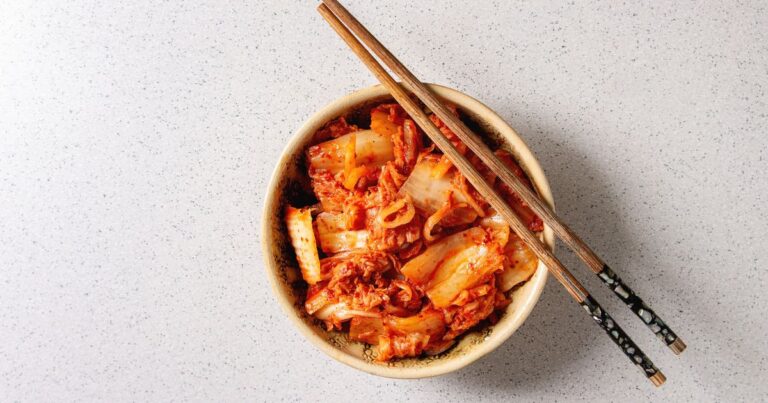



I tried and made the Apple Butter Recipe. Let me tell you it’s absolutely delicious. I baked homemade plain rich muffins and spread it on. Perfect 👌